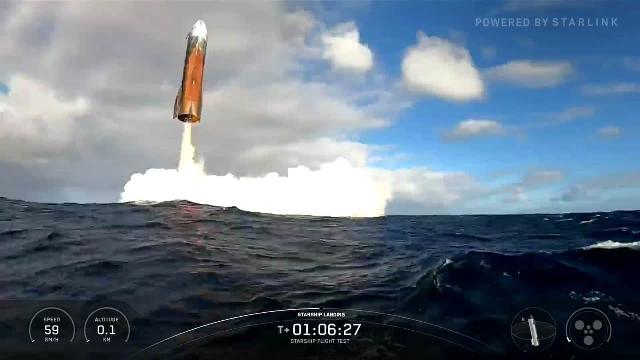For the first time, the company was able to fix the shortcomings of Starship V2 sufficiently to complete the entire planned test program in one flight. However, it was not without failures this time either. Traditional American space players continue to believe that delays in the program will allow China to win the second moon race from the United States.
SpaceX's Starship transportation system program is the most ambitious in the history of terrestrial astronautics. This is the first fully reusable space launch system ever created in hardware, so structurally it is dramatically different from anything that has been done before. Even in science fiction, the only analogues that are more or less similar in description are a reusable stainless steel rocket (with a tail landing due to engine braking) from Dunno on the Moon. Therefore, the development of a new rocket promises to be the longest in the history of rocket engineering. The refinement process is complicated by constant changes to the design: SpaceX chief engineer Elon Musk insists on rapid improvement of various aspects of the system, as a result of which already tested components are changed, introducing new, untested elements into the design.
As a result, while the Starship V1 tests in 2024 were relatively successful, after the transition to Starship V2, all three flights this year ended in unplanned explosions. In preparation for the ground tests in the summer of 2025, StarshipV2 exploded on the ground stand, largely destroying the launch pad infrastructure, making it difficult to prepare for the next tests.
The new launch of the system took place on August 27, 2025 at 2.30 Moscow time. This time, the design has been modified to block the possibility of explosions that took place this year. The pressurization gas supply system to the tanks was changed, so no methane droplets were visible on the cameras installed inside the Starship this time. The pressure in the gas boost tank was reduced to avoid an explosion, as in the ground tests in June this year.
As a result, the launch was completely normal (all 33 engines of the first stage worked, which is not always the case). After a minute and a half of flight, automation turned off one of the 33 Raptor engines of the first stage, but this did not affect the flight as a whole: like the Korolev N-1 rocket, Starship is such a multi-engine just to fend off failures of individual engines. The hot separation of the steps, which had never been used in American rocket science before, also went well. With it, the flame of the second-stage engines acts directly on top of the first stage.
After separation, the Starship S37 (the second stage of the system, also known as the ship) flew normally along a suborbital trajectory, releasing about 16 tons of payload into space. These were test models of particularly large Starlink satellites, which the company plans to launch from a new spacecraft. However, upon release, at the twentieth minute of the flight, there were obvious impacts of satellite layouts on the details of the exhaust system (a kind of cargo lock). Despite them, nothing jammed and all eight layouts came out fine.
47 minutes after launch, something exploded in the engine compartment of the Starship S37, and the debris was clearly visible on the video. Strangely enough, the explosion did not prevent the ship from entering the atmosphere in a precisely calculated area and smoothly turning off the speed of the engines so as to approach the water at a minimum speed.
The moment of the explosion in the engine compartment of the second stage. It's easy to see the engines continuing to operate despite the explosion / © YouTube
After accumulating a sufficient number of such soft drives, the company plans to begin planting the second stage of the system on the landing tower at the same Starbase cosmodrome where it launches Starship. This time, the first stage was not planted either, as SpaceX injected it into the atmosphere at particularly high angles to test how safe it was to extinguish the maximum possible portion of the energy of the falling stage by friction with the air.
At the second stage, a new arrangement of "fins" (rudders) and several thermal protection systems were tested at once. One of the fins partially burned out in flight, but did not come off and worked normally. Among the thermal protection systems, in addition to 18,000 hexagonal ceramic tiles (each the size of a plate), sections of the cladding with bare metal and tiles cooled by liquid methane from tanks were tested. So far, the company does not know which approach will be the most effective.
SpaceX Chief Engineer
The task of working off the system's heat shield to such a state should be the most difficult of all. However, to implement the landing of people on the Moon by Americans in the 2020s, its solution is not required: the company's production facilities potentially allow to produce up to one Starship per day, so even with one-time use, it will be possible to refuel its lunar version in low-Earth orbit and fly it to the Moon.

The condition of the heat shield tiles of one of the shuttles after the test flight. SpaceX's goal is to ensure that its heat shield is not damaged after flight.
Image source: Wikimedia Commons
At the same time, the goal of creating the system is precisely the reusability and the ability of the spacecraft to land on Mars after a long flight. Tests of this kind will obviously take several more years, since even the most optimistic estimates of the launch time of the unmanned version of the new spacecraft to the fourth planet are the end of 2026.

